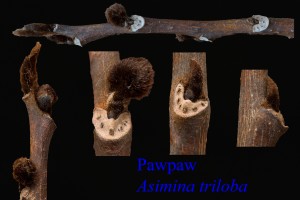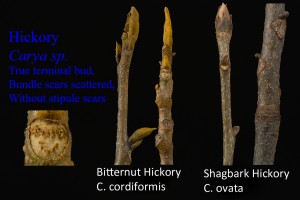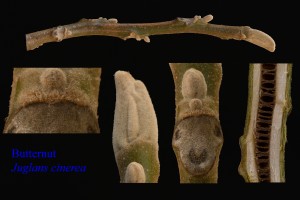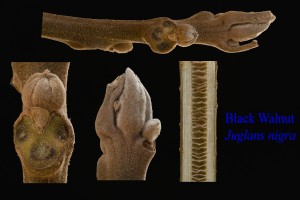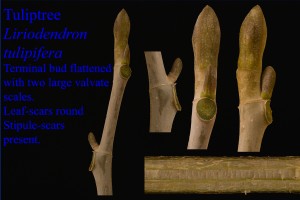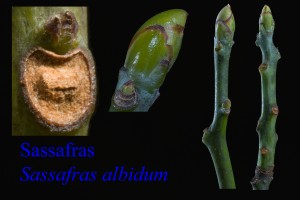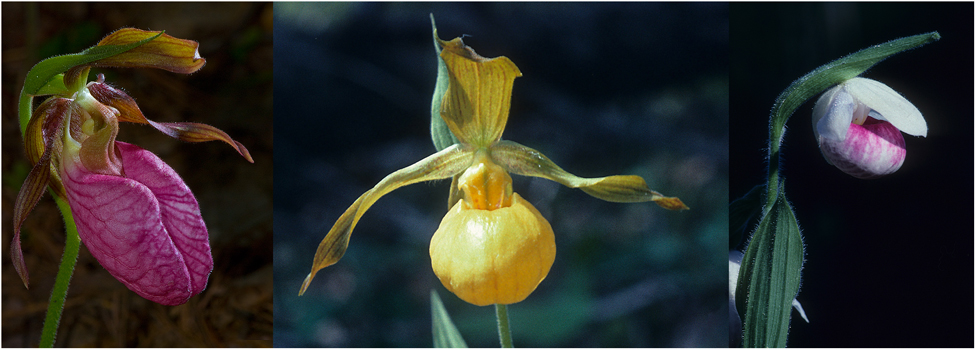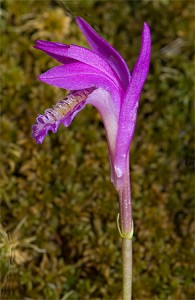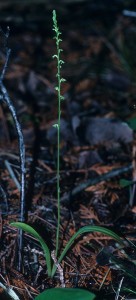Pawpaw (Asimina triloba) is a small understory tree that grows in floodplains in southern Michigan, ranging north to Bay City. The buds are tomentose (meaning with short bent matted hairs). The terminal bud is long and the lateral buds are smaller and appressed. Spherical flower buds often occur even on trees as short as five feet tall.
Bitternut Hickory (Carya cordiformis) has sulfur-yellow buds that appear to lack bud scales. It is the only Michigan tree species with yellow buds.Shagbark Hickory (Carya ovata) has a large terminal bud with spreading outer bud scales. The lateral buds are smaller.
Butternut (Juglans cinerea) has a chocolate-brown chambered pith. The leaf scar is not notched and often has a downy ridge across the top. This leaf scar has a camel-face appearance. The terminal bud is longer than it is wide.
Black Walnut (Juglans nigra) has a cream-colored chambered pith. The leaf scar is notched. The terminal bud is as wide as it is long.
Tuliptree (Liriodendron tulipifera) has smooth shiny twigs with flattened, short-stalked, terminal buds. The lateral buds are sessile (meaning without stalks) and possess prominent stipule scars. The pith is diaphragmed. This species is the tallest tree east of the Mississippi.
Sassafras (Sassafras albidum) grows throughout Michigan’s Lower Peninsula. It is more common south of Bay City. The terminal buds are greenish and the twigs are green and aromatic. Sassafras is the only Michigan trees species that has new growth that branches.
Posted by Donald Drife
Webpage Michigan Nature Guy

